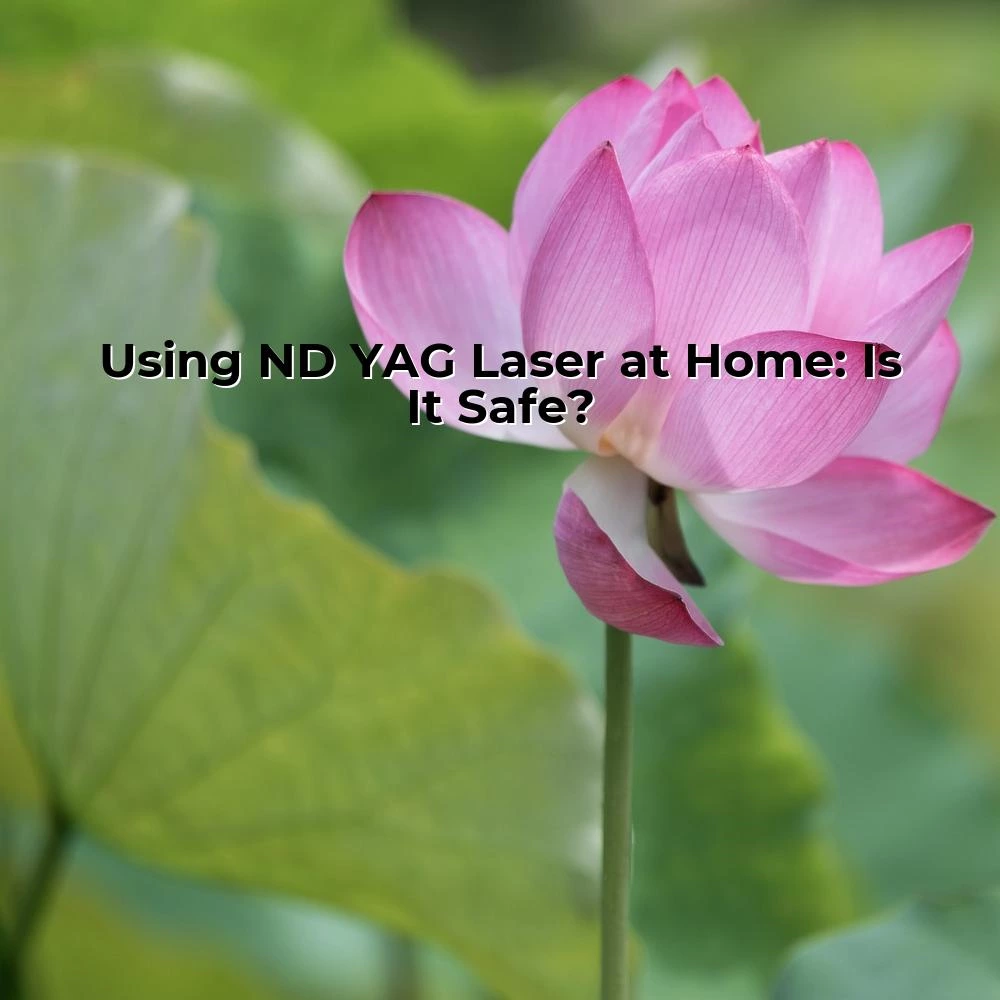Using ND YAG Laser at Home
| Visit:79

Using ND YAG Laser at Home
As professionals in the medical field, we consistently strive to ensure the safety and wellbeing of our our patients. Among the emerging trends we must be cognizant of is the use of an ND YAG laser at home.
Derived from Neodymium-doped Yttrium Aluminium Garnet, abbreviated as ND YAG, these lasers are commonly used in various medical applications – primarily for laser hair removal procedures, treating skin pigmentation, thread veins, and advanced rejuvenation therapies. Their popularity has led to the rise in home-use devices, prompting discussions on their safety.
When administered by a professional, ND YAG lasers target the melanin within follicles—chromophores, to be precise—thereby minimizing damage to the surrounding tissues. However, the precision required is considerably challenging, even under professional circumstances. The crux of the matter lies in striking a balance: enough energy should be delivered to destroy the follicle, but not so much that the surrounding tissues are harmed.
Home-use ND YAG lasers, as advertised on platforms such as ciellulu.net, boast convenient designs and claim to be just as effective. But is it safe for untrained users to operate these devices at home?
These devices operate on a lower power level compared to those found within a clinical setting. This has the apprehensible effect of reducing the potential damage to surrounding tissues, yet, it also compromises the effectiveness of the treatment. Therefore, users may need to perform the treatments more frequently to achieve comparable results, increasing the risk of potential harm.
Moreover, there's a distinct lack of supervision with home-use devices. The delicate balance of operation required with ND YAG lasers could easily be skewed, possibly leading to burns or hyperpigmentation. Not all skin types respond the same way, and individuals with darker skin tones are particularly at risk.
Additionally, home devices don’t typically come with a cooling system, which is integral to the safety and effectiveness of ND YAG laser treatments in a clinical setting. Cooling systems serve to protect the skin from excessive heat generated during the treatment, and their absence in home devices raises significant safety concerns.
Finally, the improper aftercare of the treated area or an overlooked health condition could exacerbate potential adverse effects. In a clinical setting, professionals are trained to provide all the prerequisite assessments prior to initiating treatment, followed by prescribed aftercare.
Consequently, while using an ND YAG laser device at home might seem convenient and cost-effective, the associated risks cannot be undermined. As medical professionals, we must educate our patients about these risks and provide them with suitable alternatives where necessary. The allure of achieving professional-level results at home is understandably tempting but ensuring the safety of patients and efficacy of treatment is paramount.
Ultimately, while innovation in medical technology is essential for advancement, it is crucial that safety doesn't take a back seat in the pursuit of convenience. The ND YAG laser home usage raises crucial questions on safety and effectiveness, and until conclusive research supports their secure usage, it is advised that these treatments be relegated to trained professionals in controlled environments.
At the core of our vocation is the responsibility to safeguard our patients' health—either in the clinic or during the promotion of DIY methods. To that end, our role extends beyond treating conditions—it includes educating about potential risks and advocating for safe medical practices.
Source: Using ND YAG Laser at Home




 Ciellulu Laser - Facial Machine Supplier
Ciellulu Laser - Facial Machine Supplier

